Lookup Tables¶
Graylog 2.3 introduced the lookup tables feature. It allows you to lookup/map/translate message field values into new values and write them into new message fields or overwrite existing fields. A simple example is to use a static CSV file to map IP addresses to host names.
Components¶
The lookup table systems consists of four components.
- Data adapters
- Caches
- Lookup tables
- Lookup results
Data Adapters¶
Data adapters are used to do the actual lookup for a value. They might read from a CSV file, connect to a database or execute HTTP requests to receive the lookup result.
Data adapter implementations are pluggable and new ones can be added through plugins.
Caches¶
The caches are responsible for caching the lookup results to improve the lookup performance and/or to avoid overloading databases and APIs. They are separate entities to make it possible to reuse a cache implementation for different data adapters. That way, the data adapters do not have to care about caching and do not have to implement it on their own.
Cache implementations are pluggable and new ones can be added through plugins.
注解
The CSV file adapter reads the entire file into memory and refreshes its contents within each check interval if the file was changed. If the cache was purged but the check interval has not elapsed, lookups might return expired values.
Lookup Tables¶
The lookup table component ties together a data adapter instance and a cache instance. It is needed to actually enable the usage of the lookup table in extractors, converters, pipeline functions and decorators.
Lookup Results¶
The lookup result is returned by a lookup table through the data adapter and can contain two types of data. A single value and a multi value.
The single value can be a string, number or boolean and will be used in extractors, converters, decorators and pipeline rules. In our CSV example to lookup host names for IP addresses, this would be the host name string.
A multi value is a map/dictionary-like data structure and can contain
several different values. This is useful if the data adapter can provide
multiple values for a key. A good example for this would be the geo-ip data
adapter which does not only provide the latitude and longitude for an IP
address, but also information about the city and country of the location.
Currently, the multi value can only be used in a pipeline rule when using the
lookup() pipeline function.
Example 1: Output for a CSV data adapter including a single value and a multi value.
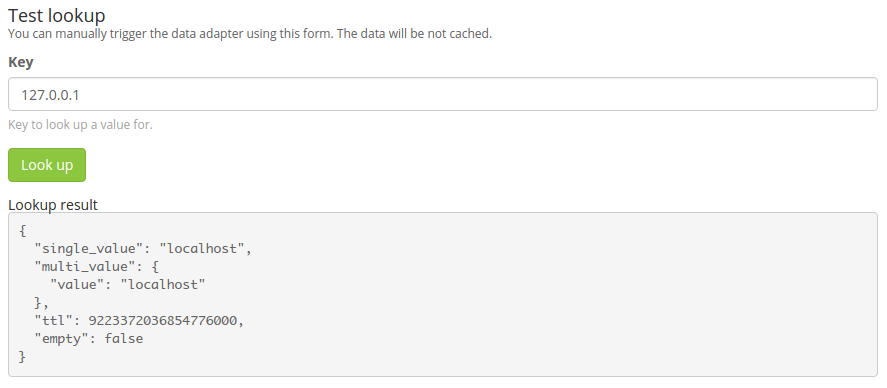
Example 2: Output for the geo-ip data adapter including a single value and a multi value.
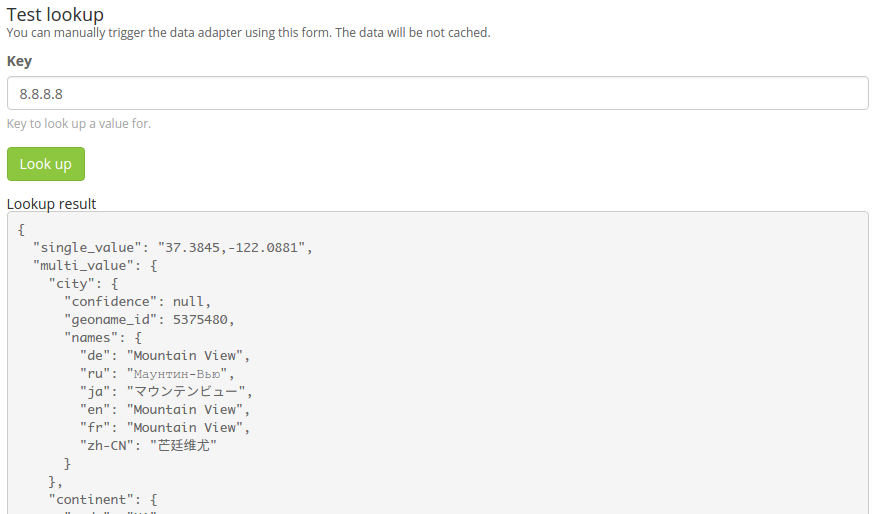
Setup¶
The lookup tables can be configured on the “System/Lookup Tables” page.
You need to create at least one data adapter and one cache before you can create your first lookup table. The following example setup creates a lookup table with a CSV file data adapter and an in-memory cache.
Create Data Adapter¶
Navigate to “System/Lookup Tables” and click the “Data Adapters” button in the top right corner. Then you first have to select a data adapter type.
Every data adapter form includes data adapter specific documentation that helps you to configure it correctly.
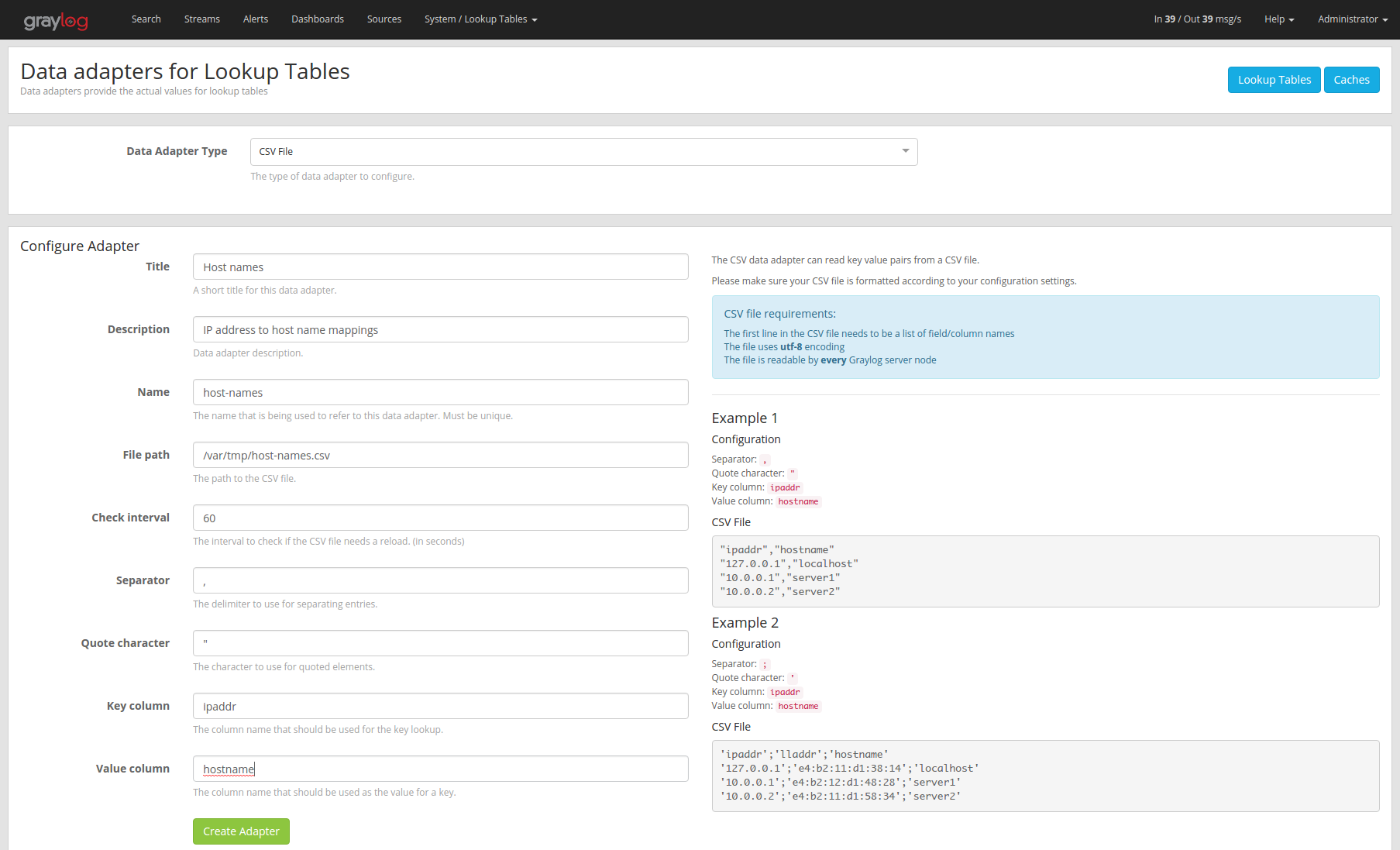
Create Cache¶
Navigate to “System/Lookup Tables” and click the “Caches” button in the top right corner. Then you first have to select a cache type.
Every cache form includes cache specific documentation that helps you to configure it correctly.
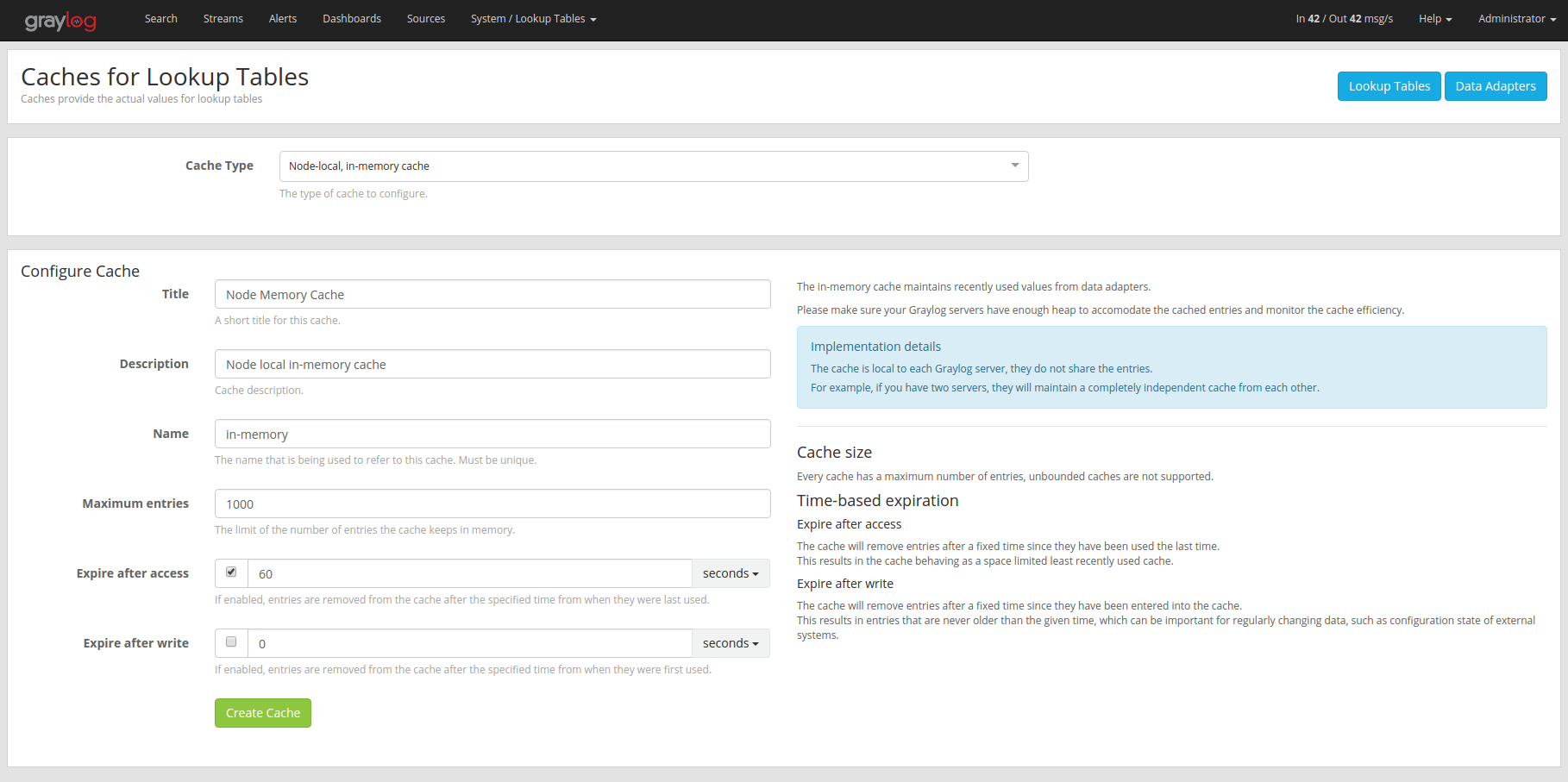
Create Lookup Table¶
Now you can create a lookup table with the newly created data adapter and cache by navigating to “System/Lookup Tables” and clicking “Create lookup table”.
Make sure to select the data adapter and cache instances in the creation form.
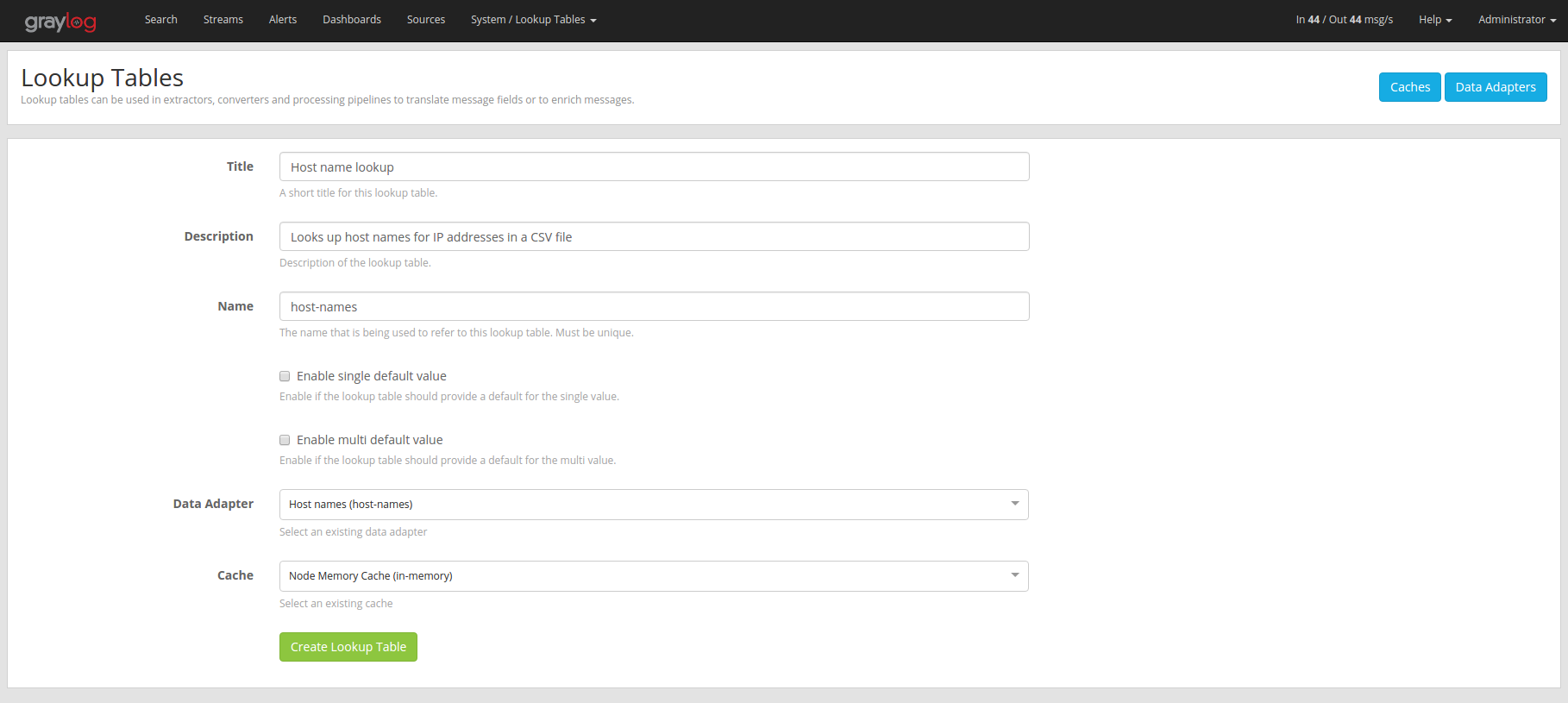
Default Values¶
Every lookup table can optionally be configured with default values which will be used if a lookup operation does not return any result.

Usage¶
Lookup tables can be used with the following Graylog components.
- Extractors
- Converters
- Decorators
- Pipeline rules
Extractors¶
A lookup table extractor can be used to lookup the value of a message field in a lookup table and write the result into a new field or overwrite an existing field.
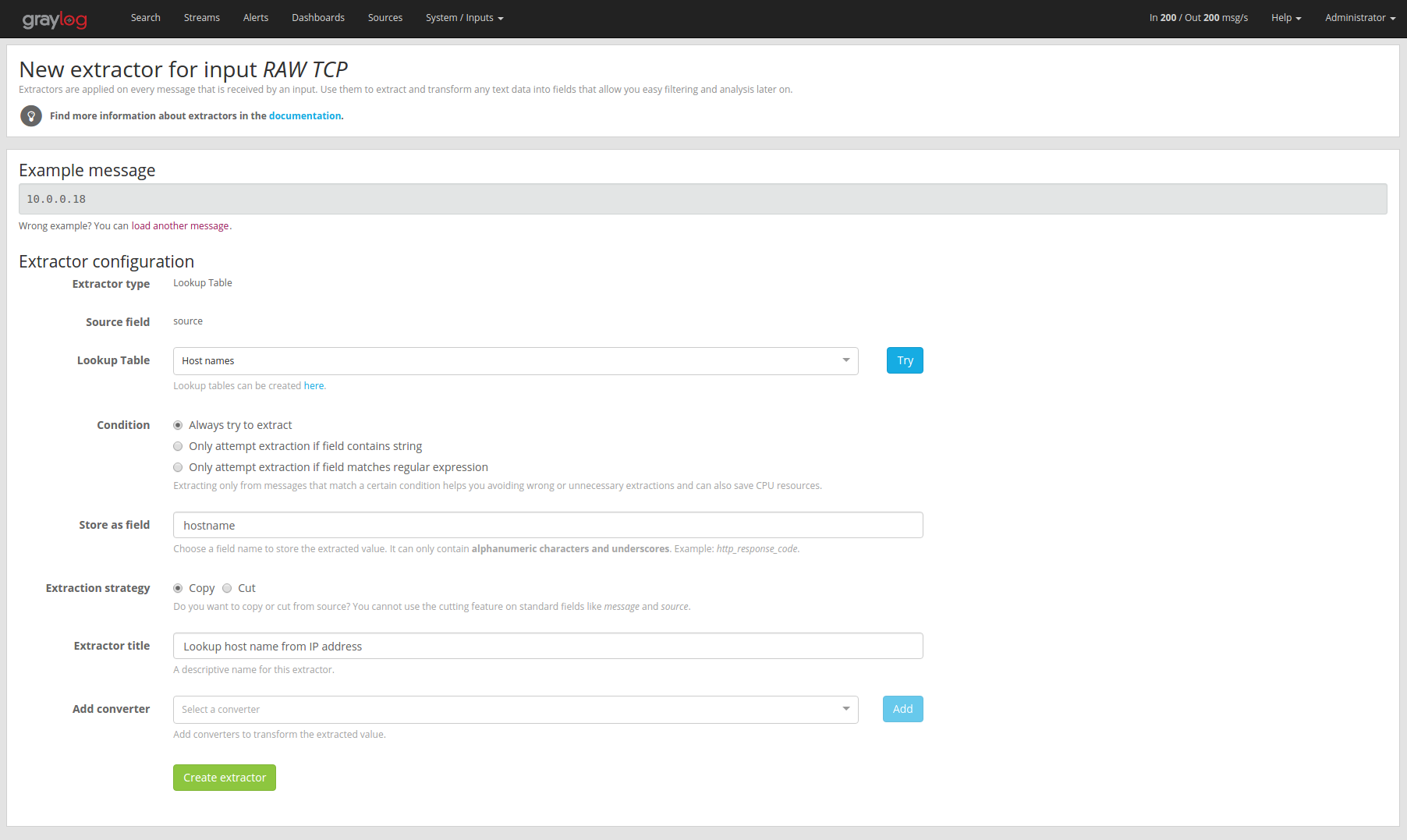
Converters¶
When you use an extractor to get values out of a text message, you can use a lookup table converter to do a lookup on the extracted value.

Decorators¶
A lookup table decorator can be used to enrich messages by looking up values at search time.
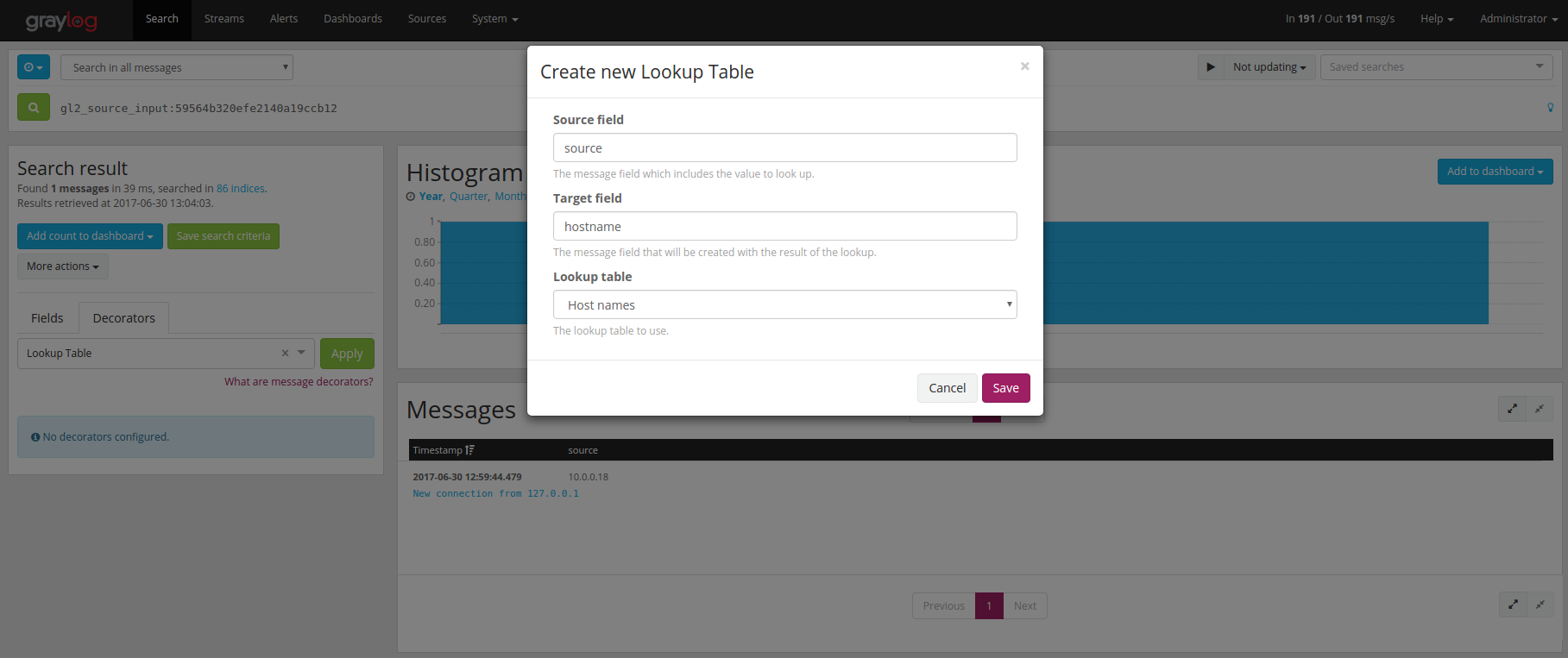
Pipeline Rules¶
There are two lookup functions that can be used in a pipeline rule,
lookup() and lookup_value(). The first returns the multi value data
of the lookup result, the second returns the single value.
